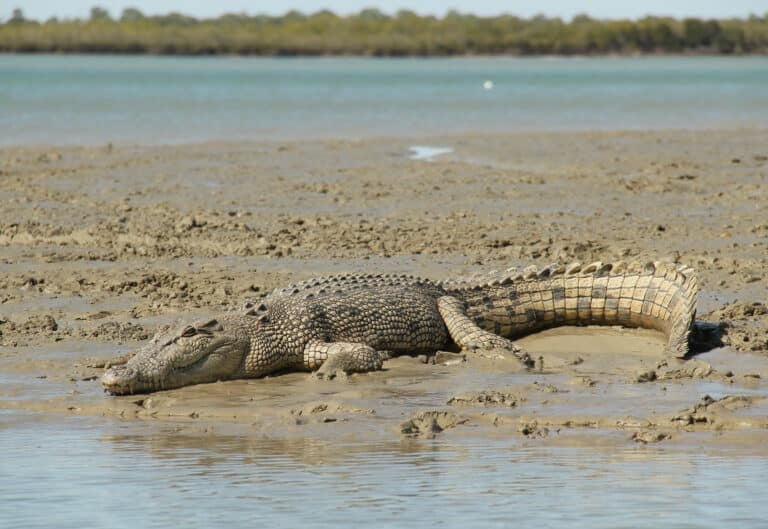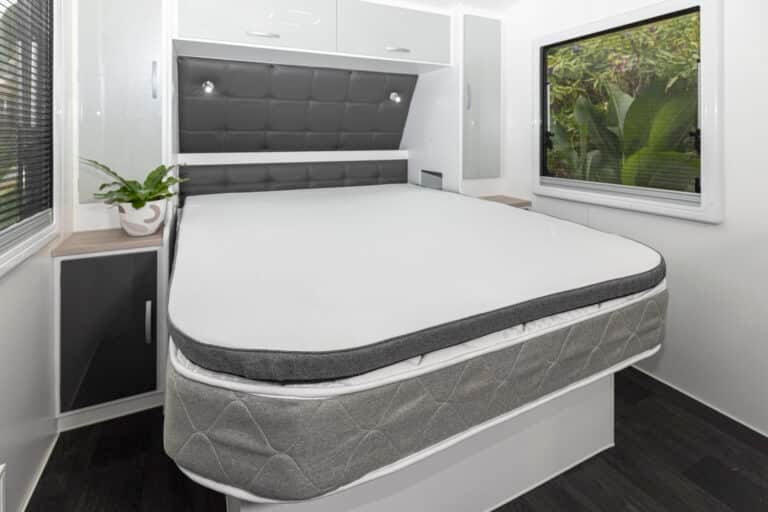Top tips on how to beat the heat in your van this summer
CLICK HERE TO READ THIS STORY IN OUR ONLINE MAGAZINE
WORDS GRANT HANAN AND LINDA BLOFFWITCH | IMAGES MY AUSSIE TRAVEL GUIDE
Unless you’re still stuck in winter hibernation mode, summer has well and truly hit with a vengeance in many parts of Australia. And while this time of year is perfect to hit the road, nobody wants to travel like a melted snowman. But there’s many things you can do to help make travelling more bearable, so let’s start by looking at your tow tug.
It doesn’t matter what you’re towing, things are really going to heat up (both inside and out), when the mercury rises. So a good starting point is to have a well maintained and reliable vehicle which is serviced regularly. But make sure the service also includes a check of your air-conditioning and cooling system, and don’t leave it to the last minute for that service. Allow plenty of time before taking off to test everything out, otherwise you could find it a very unpleasant trip if it’s a hot day and all the air-conditioner does is blow hot air.
While it may not be possible to avoid driving completely in hot weather, there’s no reason why you can’t hitch up the night before to get away early the following morning. Your neighbours will love the fact you haven’t woken them at 4.30am to hitch up and take off before the sun rises, and it allows you to get a full good night’s sleep before taking off. And if push comes to shove, you could drive for a while after sunset as temperatures begin to drop if you’ve got a good set of driving lights.
We’ve also found our platform roof rack works well for reducing heat while travelling as it keeps the sun off the vehicle even when it’s not loaded. Adding some sun shade reflectors of sorts over the glass areas once we’ve stopped is another cooling technique we use, as this too can make a big difference to inside temperatures. Then by simply leaving some windows open slightly, any heat is able to escape.
But there’s plenty of things to help prepare your RV for the hotter weather too. Appliances such as air-conditioners and refrigerators all work harder in the heat, so it’s natural you’re going to want them working at peak performance. Minor maintenance jobs such as cleaning filters and vents can be done as a DIY job, but it’s best to get professionals to do a major service to ensure all components are in good working order and fully charged with the right liquids.
Having the heat reflected from your RV is also paramount to keep it cooler, so if you’re in the market for a new RV, smart colour choice, use of reflective colours, and surface proprietary aftermarket coatings all help. Surprisingly, correctly mounted rooftop solar panels create an insulating ceiling effect by keeping the sun’s rays off the RV’s roof surface, and keep rooftop hatches open to assist with letting out heat. Nobody wants to be sitting in an oven on wheels!
When an RV’s insulation is generally limited to sarking materials and lightweight foams, it’s unlike buildings that can be loaded with thick insulating materials. So finding ways to keep an RV cool when it heats up comes down to how you travel and where you set up.
Firstly, opening large windows for crossflow ventilation captures breezes and will allow air to circulate. It’s also desirable to have reflective capabilities for windows and hatches, and dark tints help keep the sun out. Newer styles of windows have inbuilt shades that can be pulled up, but adding blockout-style curtains in older RVs can
also be effective.
Where you park your rig can have a bearing on summer heat. While we’d all like a perfect summer campsite, finding a suitable one can be a challenge at times. With vehicles and RVs all differing, determine which direction is the best to park for your own circumstances. The key is to minimise the amount of time your RV’s walls are in direct sun during the day. It’s natural to position your rig in as much shade that you can grab, so this is where portable solar panels/blankets with leads that can run out into the facing sun for recharging house batteries are useful. Keep the sun off your RV side walls by using awnings, and add a sail track on the off side where you can slide in an awning screen wall or a tarp of sorts.
Now while you have access to 240V power and your RV is equipped with a refrigeration-style air-conditioner, keep your RV closed and windows/hatches covered to prevent the cool air from escaping. However, if you’re camping and without power, then try to achieve the opposite. Have everything open to keep air circulating – using 12V fans or even a 12V-style evaporative air-conditioner can be very effective. Whether it’s a large, fixed unit or a couple of personal fans, it doesn’t matter. It’s simply the cool moving air you’re after. Canvas-style RVs heat up quickly, but they’ll also cool down quicker, as they can easily be opened up to let the hot trapped air escape. So look for possible solutions. For example, place additional canvas above the tent structure to create a ceiling gap which keeps the direct sun rays off the tent. This is called a tropical roof, which some manufacturers’ build into their designs, but you can easily make your own using poles, a piece of canvas and some guy ropes pegged out over your campsite area.
Let’s say you’ve managed to jag that perfect campsite near water, so it goes without saying you’ll naturally want to be under shade. But if you’re booking a site in a caravan park, aim to book well in advance and use Google Map imagery to try and pick a shady site when making your booking.
But how do you keep yourself cool? We’ve always found it doesn’t matter where we travel to, we always keep a number of spray bottles filled with water on hand. Misting the surrounding air is an effective way to help keep cool, and simply giving yourself (or your partner/kids/pets) a squirt now and then can do the trick. Get a good night’s sleep by cooling your bedding down with a mist or two, and combining damp sheets and a 12V fan blowing directly on you can work wonders.
And we’ve all heard the advice to keep well hydrated, so H2O is the go. While alcoholic drinks are cool at the time when consumed, they’ll heat the blood and increase your body heat. If you’re not a fan of drinking plain water, add a dash of citrus to help quench your thirst. Dress sun smart for outdoor activities, so with a hat and the simple addition of a wet bandana tied around your neck, it can help prevent sunstroke and dehydration. We also travel with water based ice blocks – they’re cheap and effective, and a real crowd pleaser when we camp.
With more and more people travelling with pets, they too can feel the heat. Small things like ice in their drinking bowls helps them stay cooler, and ice ‘bricks’ containing some food treats is another way to help keep them entertained and cooler on hot days. Allow pets as much space and moving air inside your vehicle as reasonably possible, and redirect vents so the cool air reaches them as well. Having them stay well hydrated may mean stopping more frequently than you otherwise would so they can refuel with a cool drink, and wet towels, a damp sponge, and damp bedding help too. And it goes without saying to keep them in the shade. As a rule of thumb – if the ground is too hot for your bare feet, consider it also too hot for your pets. If you have the room, a small blow-up style kids’ pool is easy to transport, and a fantastic way for your fur friend (and you) to cool off.
Whether it’s a summer getaway to the coast, or an inland river spot or gorge adventure, these few ideas should help you plan how you go about keeping cool, so you can enjoy those lazy summer days that we all long for.












